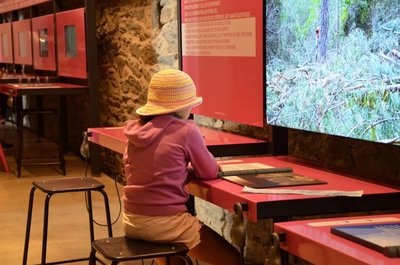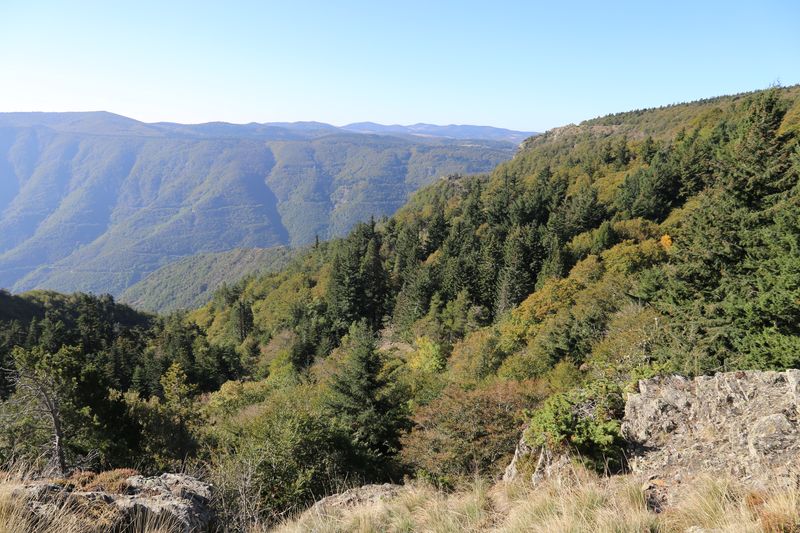
L'Hort de Dieu arboretum
“Remembering the fabulist's good advice, we wanted to plant without waiting; in spring 1903, and especially in the autumn of that same year, we put in place over 1,200 plants at L'Hort de Dieu, including 773 trees... We now have 219 species of tree or shrub being either cultivated or studied on Mont Aigoual.” (Charles Flahault, 1904). A network of ten arboretums was created between 1885 and 1903. The botanist Charles Flahault provided scientific support to create the L'Hort de Dieu arboretum.
9 points of interest
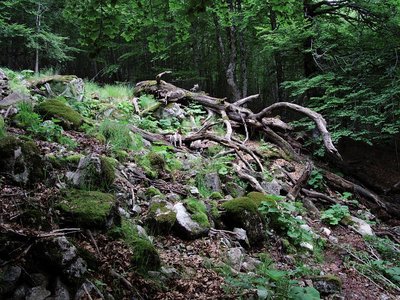
Forêt de l'Aigoual - © Gaël Karczewski  History
HistoryA site for botanical experiments
Marker 1
L’Hort de Dieu is located at an altitude of 1,300 m and shaped by an extreme climate. This site with its exceptional assets is a favoured study and experimentation zone for botanists. The tree collection is just over 100 years old, and some of the specimens are declining because of old age or else because they are not well-adapted to this mountain range. Today, there are 75 species left of the 140 that have been tested over the past century. To safeguard the interest of this heritage site, the Office National des Forêts and the Cévennes National Park are currently reflecting on renewing the collection.
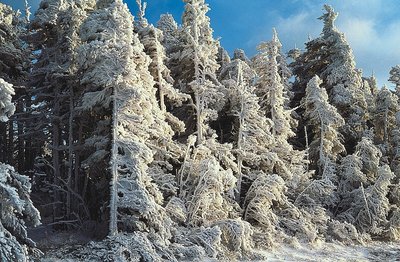
Pins à crochets sous la neige à l'Aigoual - © Yves Maccagno  Natural environment
Natural environmentCreeping pine or mountain pine?
Marker 2
The pine trees look different from one side of the path to the other. At the upper limit of Europe's mountain forests grows a “prostrate” pine called creeping pine. To ascertain whether its shape – which is different from the mountain pine's – was due to violent winds or genetics, Flahault planted the two trees next to each other. He was thus proved that this particularity was due to genetics, and that these are indeed two different species. In complete contrast with the original conditions, the creeping pine is now dominated by the other trees and poised to disappear.
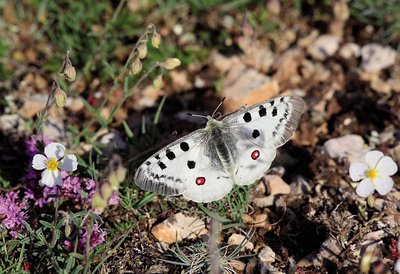
Apollon - © Régis Descamps  Natural environment
Natural environmentRestoring the forest
Marker 3
Several forestry dynamics can be seen here:
on the left, natural evolution: the rocky ridges have herbaceous and shrubby vegetation and are gradually being colonised by oak and whitebeam. This overgrowth tends to be detrimental to certain species, such as the Apollo butterfly.
opposite, natural regrowth of the beech forest from over-exploited 19th-century coppices.
on the high slopes, on the right, assisted forest development: conifers have been introduced among the naturally growing deciduous trees.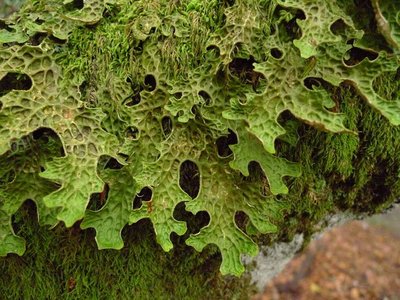
Lobaria pulmonaria - © Mario Klesczewski  Natural environment
Natural environmentDid you say “chourradou”?
Marker 4
This remarkable beech is over 200 years old and called chourradou in Occitan, after the sheep that would chourrer (ruminate) and rest under its shady canopy. This kind of tree (large cavity, detached bark and dead wood) is home above all to saproxylic or dead-wood-eating insects and fungi. On another of these old beeches, below the path, you can see a large lichen called lobaria pulmonaria, which needs a lot of water and is highly sensible to atmospheric pollution. It grows very slowly and thus testifies to the ripe old age of this part of the forest.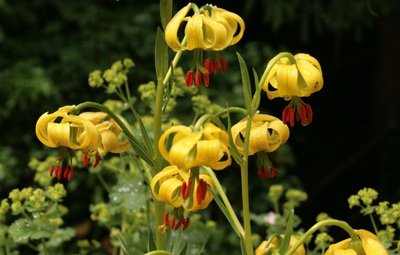
Lis des Pyrénées - © J.-P. Grandmont  Natural environment
Natural environmentAlpine garden
Marker 5
This panel shows the legacy of Charles Flahault's experimental work.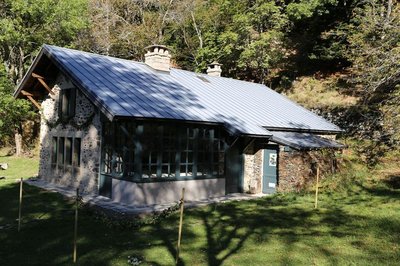
Chalet laboratoire en 2023 - © B. Algoët  History
HistoryThe Chalet, Charles Flahault's laboratory
Marker 6
“And who knows whether some generous benefactor will not decide one day that our students should have a hospitable roof at L'Hort de Dieu itself? I can see the little house as if it were already built, receiving much sunlight on the Mediterranean side, with its study room on the ground floor and its large fireplace around which scientific problems are discussed late into the night..” (Charles Flahault, 1904)
The Chalet, which was built the following year, made it possible to establish a botanical garden, a high-altitude vegetable plot and a plant nursery nearby. Despite the forest reconquering the surroundings, some of the plants introduced at the time have survived until today: Pyrenean lily, great masterwort, and others.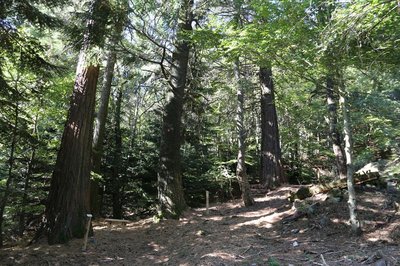
Collection de l'Hort de Dieu - © B. Algoët  Natural environment
Natural environmentAcclimatising a plant species
Marker 7
Fabre and Flahault pursued two objectives: studying the way certain forest species adapt to the Cevenol climate and studying plants in their relationship with environmental conditions. Some plant species are better adapted than others to the Cevenol climate. Thus, Mediterranean and Douglas firs do very well, as do almost all the species native to Europe, Asia Minor and the western United States. Species from East Asia and the eastern United States, however, whither away. Through his work, Flahault laid the foundations of phytosociology, the study of how plants arrange themselves into communities as a function of the environmental conditions.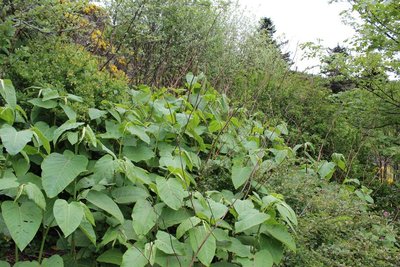
Renouée - © Valère Marsaudon  Flora
FloraAn invasive species: knotweed (fallopia japonica)
Marker 8
Sakhalin knotweed, just like Japanese knotweed, is an invasive species. That means it is not in its environment of origin and grows at the expense of other species, alongside roads and on the banks of many rivers. A “test zone” project aiming to limit the species is being studied at L'Hort de Dieu, thus continuing the experimental mission of the arboretum. To stop knotweed from proliferating, ripping-up, rhizome destruction and covering- up with tarpaulins are all being tried.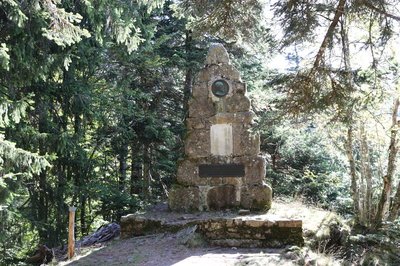
Stèle homage aux botanistes et forestiers - © B. Algoët  History
HistoryBotanists' history
Marker 9
The particular nature of this site earned it the name of “God's garden” (Hortus Dei). Since the 16th century, Mont Aigoual has provided botanists with rare species for herbariums and botanical surveys. Some species were also gathered for their medicinal qualities, called “vertus des simples”, a term to be found on a handwritten map of the Cévennes dating from the early 18th century. In 1936, a stele was inaugurated that is dedicated to the memory of the many botanists who contributed to the advancement of the sciences on the L'Hort de Dieu site.
Forecast
Altimetric profile
Recommandations
Steep slope about 800 m in length on the first part of the walk. Narrow and steep path – firm shoes are essential.
The access to the highly protected Alpine garden (marker 5) was specially conceived for this walk. Please stick closely to the laid-out paths.
Horse-riding or mountain-biking are not allowed on or adapted to discovery trails.
Information desks
Tourism & national parc'house
Col de la Serreyrède, 30570 Val d'Aigoual
The Maison de l'Aigoual houses the tourism office Mont Aigoual Causses Cévennes and the Maison du Parc national. This visitor centre provides information on and raises awareness of the Cévennes National Park, its sites and events as well as the rules that must be observed in the National Park's central zone.
On site: changing exhibitions, video projections, Festival Nature events and shop Open year-round
Transport
www.lio.laregion.fr
Access and parking
Col de la Serreyrède towards Mont Aigoual on the D 986 (from Valleraugue or Meyrueis) or the D 48 from Le Vigan.
Col du Perjuret towards Mont Aigoual on the D 998 and D 18 from Florac.
Parking :
Calculateur d'itinéraire Lio
Utilisez le calculateur liO pour organiser votre trajet en région Occitanie.
Autres régions
Calculez votre itinéraire en Auvergne Rhône Alpes sur Oùra
Biodiversité autour de l'itinéraire
Source

Report a problem or an error
If you have found an error on this page or if you have noticed any problems during your hike, please report them to us here:


